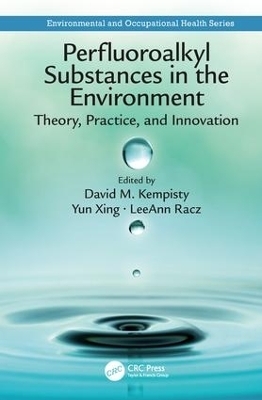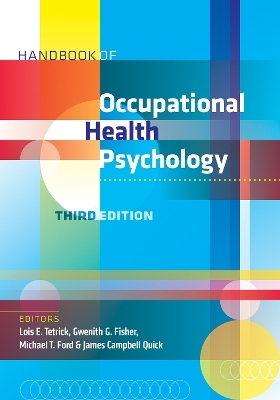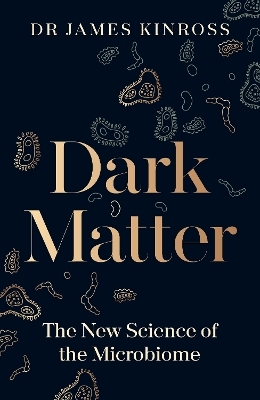
Perfluoroalkyl Substances in the Environment
Crc Press Inc (Verlag)
978-1-4987-6418-6 (ISBN)
Per- and polyfluorinated alkyl substances (PFAS), often referred to as per- (and poly) fluorinated compounds (PFCs), have been used for years in many everyday¾ and some lifesaving¾ products. However, their use has been linked to adverse health effects in humans, a problem compounded by their persistence in the environment. This book discusses the various challenges of PFAS in our environment today, including their historical use as well as their chemical and toxicological properties. It also presents robust discussion of analytical challenges and special considerations in sampling. The work goes on to give practical recommendations for dealing with these compounds in today's dynamic regulatory landscape and includes several chapters on various remediation techniques.
Key Features:
Comprehensive overview of per- and polyfluorinated alkyl substances (PFAS) historical use and chemical/physical properties which help us understand their persistence, transport, and transformation pathways in the environment
In-depth analysis of PFAS toxicology
Detailed descriptions of conventional and state-of-the-art remediation technologies
Practical recommendations for dealing with PFAS in a dynamic regulatory landscape
Robust discussion of important sampling and analytical considerations
Perfluoroalkyl Substances in the Environment: Theory, Practice, and Innovation explores the challenges across the topical areas of regulation and management, toxicology, environmental remediation, and analytical sampling and analysis.Readers will find this text helpful in understanding complexities associated with PFAS and informing management strategies to effectively protect this and future generations.
David M. Kempisty, Yun Xing, LeeAnn Racz
Section 1 – Introduction and Analysis. Fluorosurfactants in Firefighting Foams – Past and Present. Perfluoroalkyl Substance Analysis to Support Site Characterization, Exposure and Risk Management. Understanding Precursor Contributions: The Total Oxidizable Precursor Assay. Section 2 – Regulations. Managing Risk from Perfluorinated Compounds in Drinking Water. Emerging Contaminant Monitoring as a Host Nation Guest: An Environmental Health Professional’s Perspective. Uncharted Waters: Challenges for Public Water Systems Addressing Drinking Water Health Advisory Levels for PFOS/PFOA. Challenges of Managing Emerging Contaminants: Historical Per- and Poly-fluorinated Alkyl Substance Use in the U.S. Air Force. Section 3 – Toxicology. Human Health Risk Assessment of Perfluorinated Chemicals. Perfluoroalkyl Substance Toxicity from Early Life Exposure. PFAS isomers: Characterization, Profiling, and Toxicity. Section 4 – Remediation. Water Treatment Technologies for Targeting the Removal of Poly- and Perfluoroalkyl Substances. Oxidation and Reduction Approaches for Treatment of Perfluoroalkyl Substances. Reactivation of Spent Activated Carbon Used for PFAS Adsorption. Ion Exchange for PFAS Removal. Occurrence of Select Perfluoroalkyl Substances at U.S. Air Force Aqueous Film-Forming Foam Release Sites Other than Fire-Training Areas: Field-Validation of Critical Fate and Transport Properties. A Preliminary Treatment Train Study: Removal of Perfluorinated Compounds from Post-Emergency Wastewater by Advanced Oxidation Process and Granular Activated Carbon Adsorption. Remediation of PFAS-Contaminated Soil. Solid and Groundwater PFAS Remediation: Two Technology Examples. Perfluoroalkyl and Polyfluoroalkyl substances (PFAS) in AFFF impacted groundwater and soil/sediment. Case Study: Pilot Testing Synthetic Media and Granular Activated Carbon for Treatment of Poly- and Perfluorinated Alkyl Substances in Groundwater. Short-chain PFASs: Their Sources, Properties, Toxicity, Environmental Fate, and Treatment.
| Erscheinungsdatum | 18.09.2018 |
|---|---|
| Reihe/Serie | Environmental and Occupational Health Series |
| Zusatzinfo | 41 Tables, black and white; 102 Illustrations, black and white |
| Verlagsort | Bosa Roca |
| Sprache | englisch |
| Maße | 156 x 234 mm |
| Gewicht | 880 g |
| Themenwelt | Medizin / Pharmazie ► Medizinische Fachgebiete ► Arbeits- / Sozial- / Umweltmedizin |
| Studium ► Querschnittsbereiche ► Klinische Umweltmedizin | |
| Naturwissenschaften ► Biologie ► Ökologie / Naturschutz | |
| Naturwissenschaften ► Chemie ► Technische Chemie | |
| Technik ► Bauwesen | |
| Technik ► Umwelttechnik / Biotechnologie | |
| ISBN-10 | 1-4987-6418-5 / 1498764185 |
| ISBN-13 | 978-1-4987-6418-6 / 9781498764186 |
| Zustand | Neuware |
| Haben Sie eine Frage zum Produkt? |
aus dem Bereich


